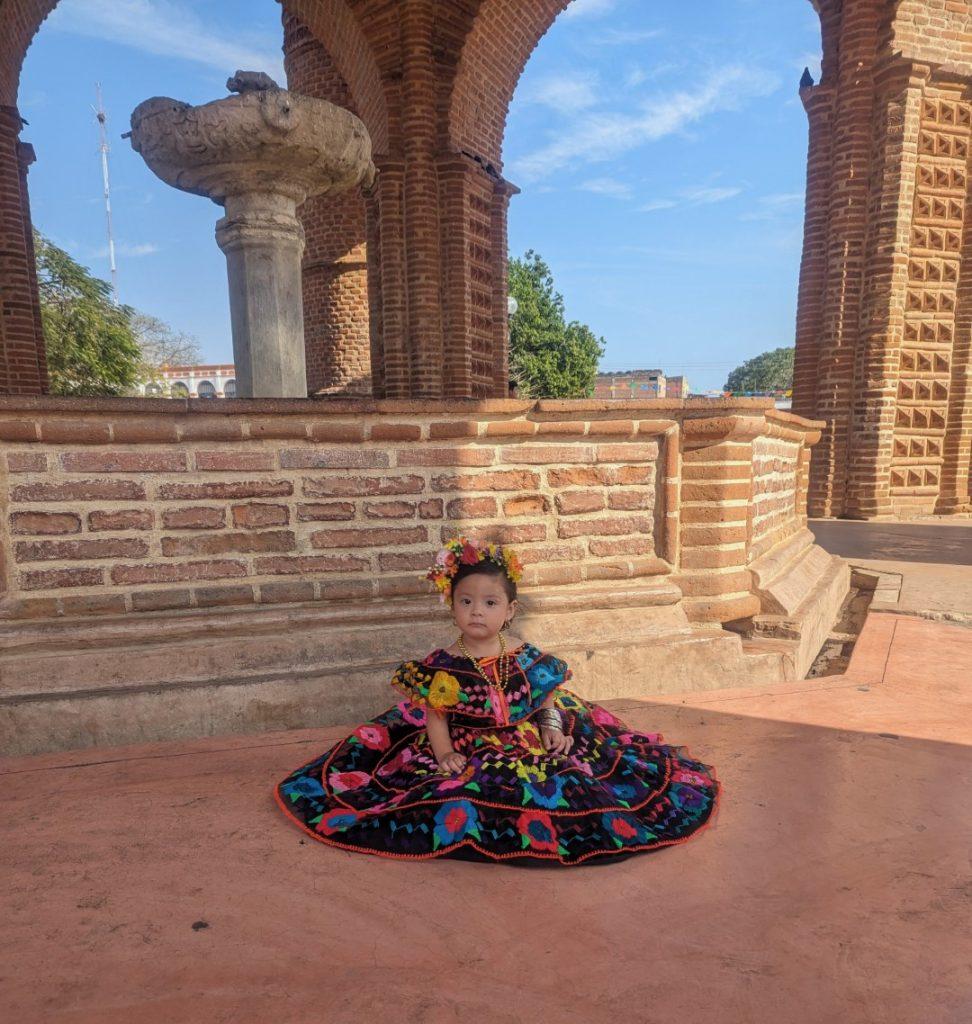
Long-time readers will know that DH (Darling Hubby) and I have been searching for years for the perfect snowbird destination. We want a Goldilocks solution that has:
- great weather (not too cold nor too hot)
- culture that isn’t just oldies cover bands (local music, dance, theatre, history, art)
- foodie paradise (high quality local ingredients easily available, and a few excellent restaurants)
- opportunities to meet others (that may be in classes, at events, and/or around a pool. Ideally a mix of locals and other foreigners.)
- places where DH can run and/or cycle without being attacked by local dogs or run off the road by trucks
- intellectual challenges – typically through learning or improving our foreign language skills
- walkability to the places we’d want to go regularly.
In recent years we’ve spent weeks or months in several places, including Lima, Peru; Cabo Verde; Guadeloupe; Mexico City; Cuenca, Ecuador; Costa Rica, Panama City; Malaga, Spain; London, UK; Vancouver, Canada. This year we added Puerto Morelos, San Cristobal de las Casas, Oaxaca City, San Miguel de Allende, and Mazatlan to the list. Each of those places has wonderful things to offer and checks some of our boxes, but none ticks them all.

I love the idea of being in the same place regularly every winter for several months in a row so we can form deeper friendships. We get a little bit of that in Malaga, on Spain’s Costa del Sol because we’ve gone there every fall for several years now. We love the walkability, the fantastic cultural scene, the markets with an incredible selection of top quality produce, the charm of the historic centre, and the beach. We’ve made friends. Our Spanish is now good enough to have real conversations with locals. The weather in October to December is fantastic: sunny most days and highs around 20 (C; ~ 68 F).
Admittedly, Malaga’s weather in January and February can be rainy and a bit chilly, so it isn’t perfect, but even then it is far warmer than anywhere in Canada at that time. We could live with putting on a sweater and a rain jacket. Unfortunately, the visa rules only let us stay for 90 days in any 180-day period. (This is especially frustrating because Spain has a bilateral agreement with Canada which allows for a 90 day extensions, but they only grant that if you are in hospital or jail.)
I’m pretty sure there is no Goldilocks spot: there are always trade-offs. But while we are still in the early years of retirement with reasonable health, we are happy to keep exploring.
So in the January – March/April period, we explore. This year it was more Mexican locations. I’ll take them in reverse order, for those of you who’ve already read my thoughts about the first three places we tried in January – February 2024.
Mazatlan
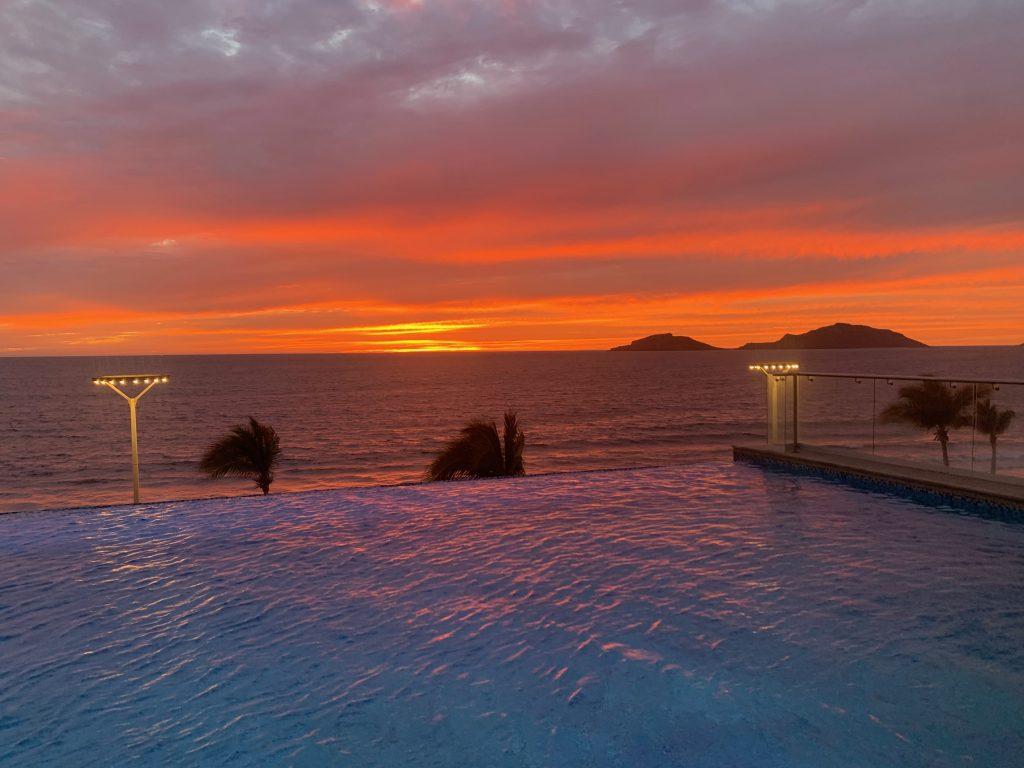
There are four main areas one can stay in:
- the historic centre of Mazatlan,
- the Malecon (a strip of a rapidly growing number of high-rises overlooking a busy four lane arterial road and a stunningly beautiful, long beach),
- the Golden Zone (at the end of that long beach, it is the area that was first developed to house tourists),
- Cerritos and other northern suburbs. This seems to be where most of the Canadian expats base themselves. It is past the Golden Zone and about a half-hour bus ride into the historic centre.
We chose a spot along the Malecon, about a 15 minute walk from a good market and about 30 minutes walk right into the central plaza of the Centro Historico. We loved the walkability, including easy access to the beach for walks and runs.
The weather in January – March is excellent: mid-20s most days, and only going down to the mid-to-high teens in the evenings. It is sunny most days, and the sunsets are spectacular. Despite the fears you may have from hearing about the Sinaloa cartel (of El Chapo fame), we felt completely safe there. If we were coming home very late we’d take a taxi. They are plentiful and cheap (especially if you load the Didi app and use it). The pulmonias (which look like golf carts but drive like cars, often booming loud music) are everywhere, although more expensive.

We liked Mazatlan and may well return there. For us it has the huge advantage of being one of the few urban + beach hot spots you can fly to directly from Edmonton. I like that it is still mainly a working Mexican city. When we strolled the beach each day we rarely saw more than one or two other gringos. And it has beautiful, fine sand. When we went to the markets we were shopping with locals. In Mazatlan you know that you are in Mexico.
What I didn’t like was the noise along the Malecon:
Construction: There are over 90 residential towers being built in Mazatlan right now! Maybe in a few years, they’ll have filled all the available spots along the beach with towers, so you won’t have to listen to jackhammering 12+ hours a day, 6 or 7 days a week. There’s also hope that those towers will lead to an increase of rental availability and maybe(?) somewhat lower prices from greater competition.
Traffic: We knew there’d be noise from the 4 lanes of traffic below our balcony. We didn’t anticipate how much people love blaring music super-loud from their cars and trucks. It wasn’t as bad as the constant horn-honking in Lima, but still too much for me.
Banda music: The third source of noise is from the Bandas. These are musical minstrel groups that include a tuba, drums, a few other wind instruments and a singer. They wander along the beach playing oompah-style music that is beloved by locals. People will hire them to come play a few songs at their table or spot on the beach.
Many expats gripe about the Bandas but I thought they added an element of fun to the beach. Admittedly, many of them really can’t play or sing very well, and there are often multiple Bandas playing different songs at the same time only a few feet from each other. Of course, they all use amplifiers!
Cerritos, where many of the Canadian expats spend their winters, is calmer. The trade-off is that you are much further from the markets and the historic centre, where most of the cultural events take place. There also seem to be some quiet streets in the historic centre. You’d have to check carefully to make sure there aren’t clubs at night on those streets that seem so calm during the day.
Oaxaca
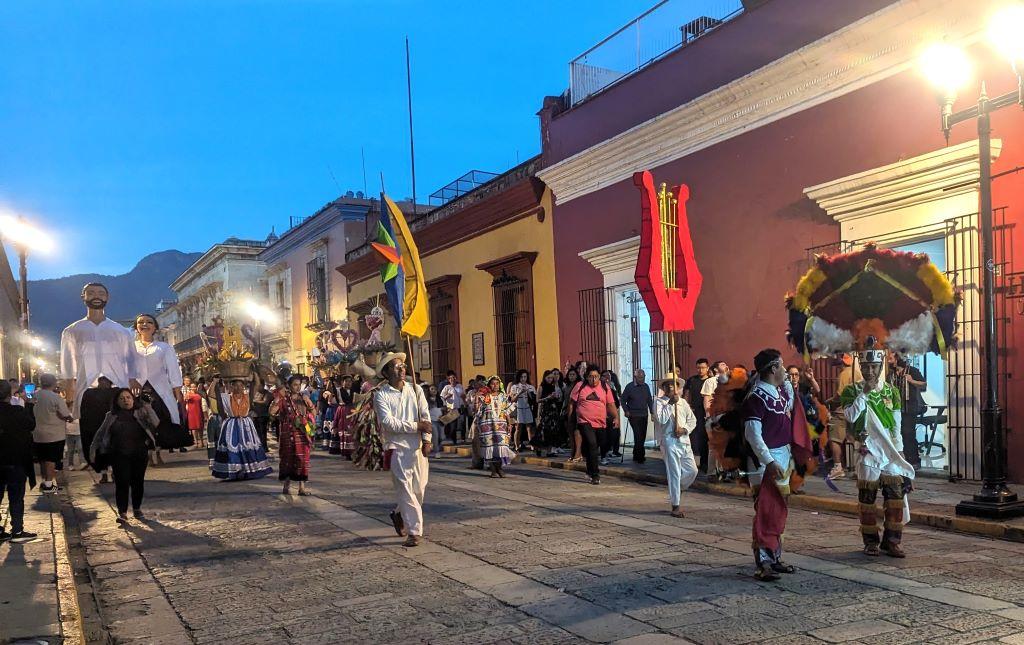
We really enjoyed Oaxaca. It has fantastic museums and art galleries, music everywhere, good restaurants, and a delightful joie de vivre.
(Click photos below to enlarge.)
We knew of Oaxaca from their famous alebrijes (intricately painted fantasy creatures) and because it is the home of mole, an essential Mexican type of sauce, made with some 20 – 40 different peppers, herbs and spices. It is also famous for its mezcals (a liquor made from agave. Tequila is the most widely known type of mezcal).
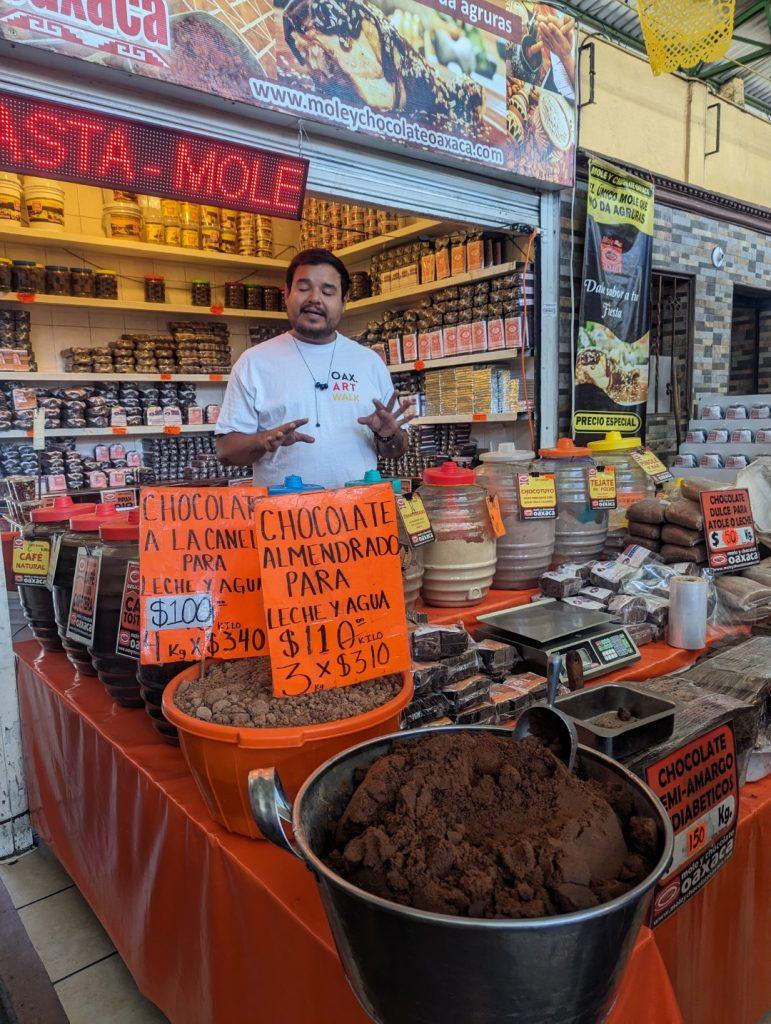
DH was worried that Oaxaca would be too hot, and we were certainly happy to slip indoors for a siesta during the heat of the afternoon. But most of the day (in the winter at least) it was quite comfortable.
It isn’t near a beach and DH hasn’t figured out where he’d run or cycle, but there may be possibilities. We felt safe and the locals were friendly. We may go back to test it out for a bit longer. We were only there for five days this time.
San Miguel de Allende

I’d been wanting to go there ever since I heard about their famous writers conference, so we timed our visit for it this year. DH and I wrote a bit about San Miguel here. It is a very pretty mountain town with an enormous expat presence. You do not need to speak Spanish to live in San Miguel. It has a fantastic art scene. It is easy for newcomers to meet other expats and make friends.
The negatives? It has become very expensive, and to me it feels too much like an American colony. I want to have to speak Spanish! It was the only place in Mexico where I encountered waiters who couldn’t be bothered to look at my allergies list (provided in Spanish and English), let alone make an effort to try to ensure I didn’t get served anything that could kill me. I suppose that colored my view of the place.
It gets quite cold overnight and in the mornings, although if you are in the sunshine it is quite warm by late morning and by afternoon it can be hot, even in the middle of winter. It is a walkable size, but beware: there are steep hills everywhere except right in the core. And the streets are uneven cobblestones, which makes walking tricky and cycling or jogging impossible.
That last point is why DH isn’t interested in a longer stay. If I were widowed and wanted a place to settle for the full winter, I would be tempted by the cultural scene and the ease of making friends.
San Cristobal de Las Casas
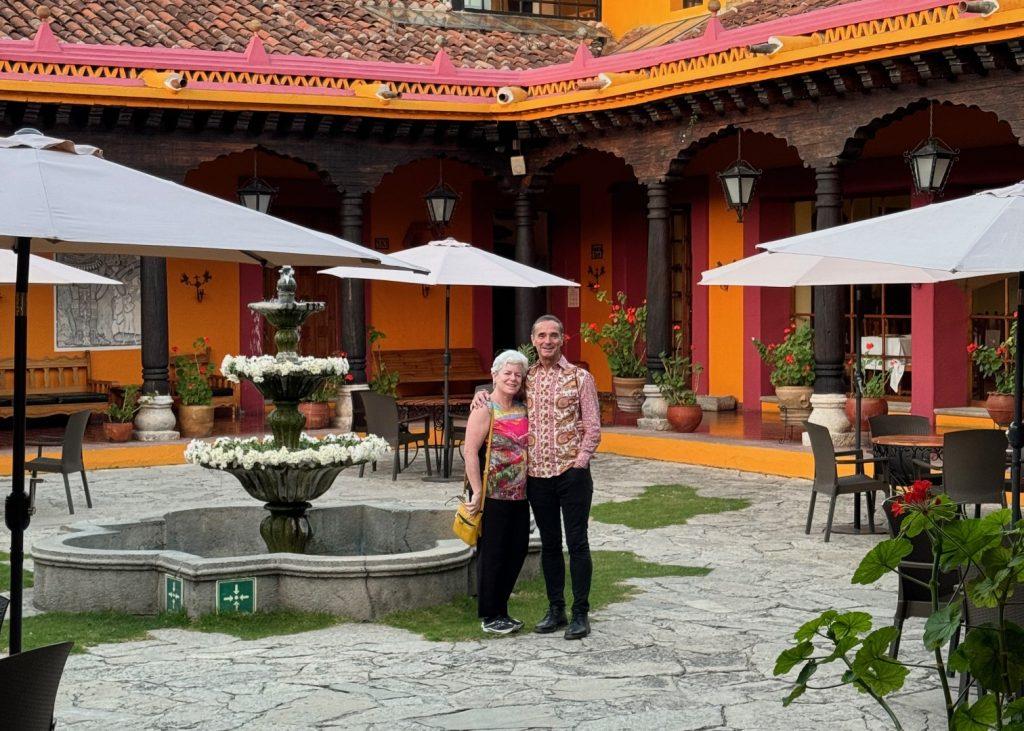
I wrote about our time in San Cristobal here. The centre of town is charming and walkable. The weather is great: cool at night for sleeping and warm (mid-20s C) during the days in January-February. The folks in the market were friendly, and the quality was generally good, although the selection was limited. It’s a bit thin on the cultural side in the town itself, but if you are willing to put up with some long bus rides you can go tour amazing archeological sites like Palenque. (See photo gallery below.)
(Click photos below to enlarge.)
San Cristobal isn’t a great place for running or cycling: first because it takes a while to adjust to the altitude – the town is at 2,200 metres (7,218 feet) above sea level and there is a tendency to burn trash and wood for heating. Also pueblo dogs are a problem if you head outside of town for cycling.
That said, it has the potential to become an amazing expat destination if they ever clean up the rivers and improve the infrastructure. That’s challenging in a state as poor as Chiapas. And although I felt safe in the city, outside of town gang violence is a problem in much of the state.
Indigenous protesters are a regular feature in this area. Our bus to Palenque was diverted twice by highway blockages, adding four hours to our scheduled 8-hour travel time. They have understandable grievances over long-standing historical injustices. But it isn’t clear to me that they are accomplishing much with the road blockages. Just as we Canadians look up the highway road reports before undertaking winter travel, there you look up the highway road reports to find out which roads are currently blocked by protesters. And, as we discovered, the reports don’t always catch them all. A housekeeper we befriended had to miss two days’ work when she’d taken her mother to a city an hour away for medical treatment because road blockages delayed them getting back.

There are also reports of people being stopped by various types of “police” demanding money. We wouldn’t have felt comfortable taking road trips on our own. Even on the bus you will often have inspectors come on and photograph everybody on the bus. Although it didn’t happen to us, we heard plenty of stories from others who’d be asked to provide money to these “inspectors”.
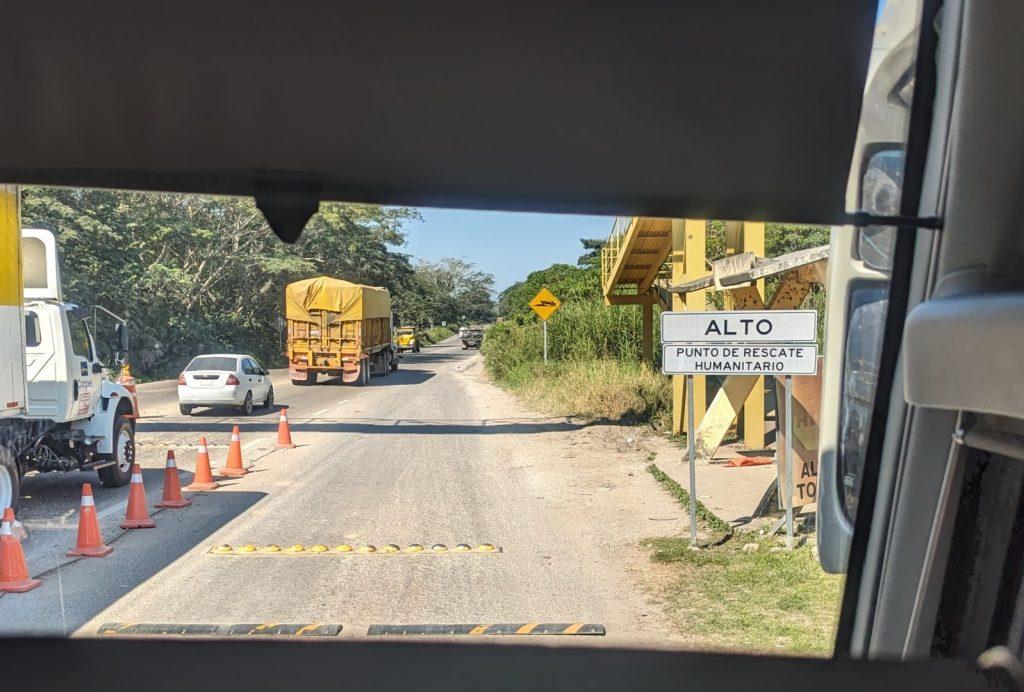
Puerto Morelos
We flew into Mexico via Cancun (one of the few spots with direct flights from Edmonton). Not interested in the party life, we headed straight to the small town of Puerto Morelos, about 40 minutes away.
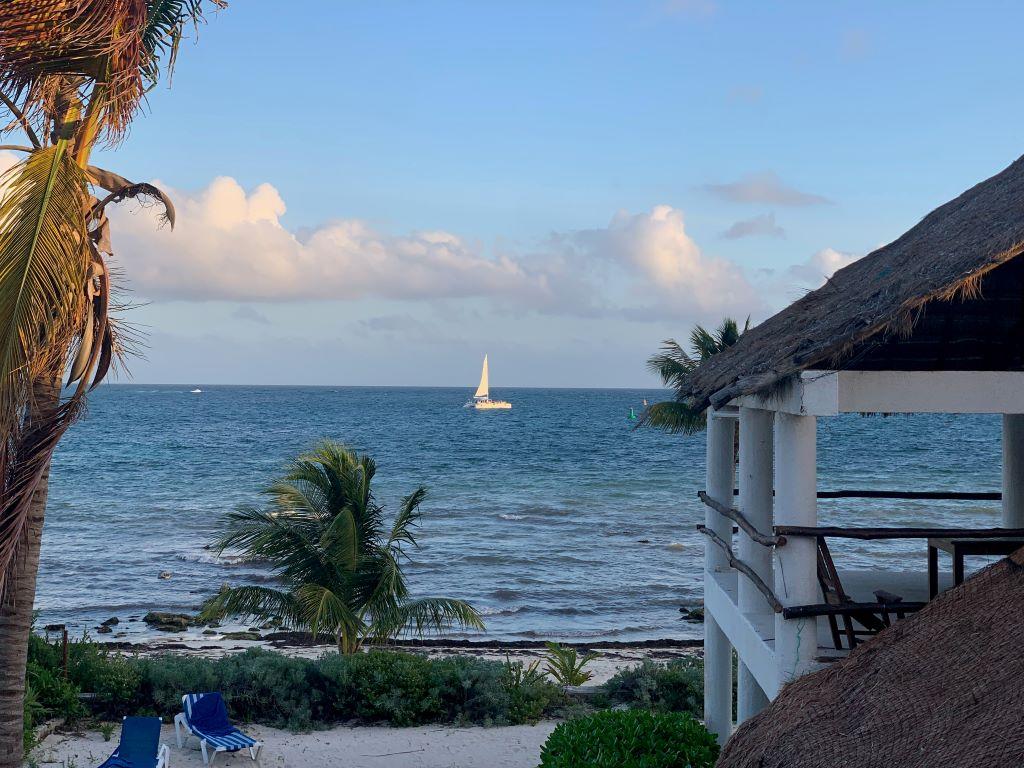
We knew it would be too small a town for us to spend long in, so we only booked three days there to get thawed from our mid-winter visit to Edmonton. We stayed at Rancho Sakol which is a lovely, rustic beach hotel. Unfortunately, the beach wasn’t great, and I ended up spending two of the three days in medical appointments. (Needed emergency dental work one day, and had an eye infection to deal with the next.) So I can’t give it a fair assessment.
Other Mexican Options
That’s all we had time for on this trip. In the past we’d spent a couple of wonderful months Guadalajara (another great city for culture) about 15 years ago. We also did several beach vacations back in the pre-retirement days when we could only take a week or two off. They included stays in several places along the Mayan Riviera and in Baja California Sur (Cabo Pulmo and Loreto). One of my favourite spots was the town of Akumal. Too small for me to want to spend long there, but the snorkeling was terrific!
Then, for a few years we let ourselves be scared away by the rising crime statistics. Now, maybe because our kids are grown so we feel we can take more risks and/or because we’ve lived in supposedly high crime cities like Lima without problems, we find the stats less intimidating. The Mexican crime rate has been going down since 2018, which is a hopeful sign.

Americans in particular are statistically far safer in Mexico than they are in the US, particularly if they aren’t buying or selling drugs. That may even be true for Canadians if you are comparing the major Mexican tourist destinations to major Canadian cities, though I don’t have the data.
My impression is that most of the violent crime in Mexico stems from drug cartels. They don’t want to target tourists. The cartels undoubtedly earn protection money from the businesses that serve those tourists. And while I hate the thought that the vendors I buy from and landlords I rent from may be forced to pay off corrupt officials and cartels, at least my tourist dollars are helping locals earn a living. The reality is that as long as you take basic precautions, you are safe in the country.
Looking at the pros and cons of each of the spots we’ve tried, Mexico is solidly back on our retirement destinations list. We haven’t found the town we want to settle in yet, and next year we will probably explore a couple more South American locations. We’ve still got the health and energy to go to places that are further than one flight away, so even if it is just for tourism, we want to do it now. But once we get to the point where being close enough for easy visits from children and (fingers crossed) grandchildren is a priority, or long-distance travel has become too difficult for us, we’ll be back to exploring Mexico.

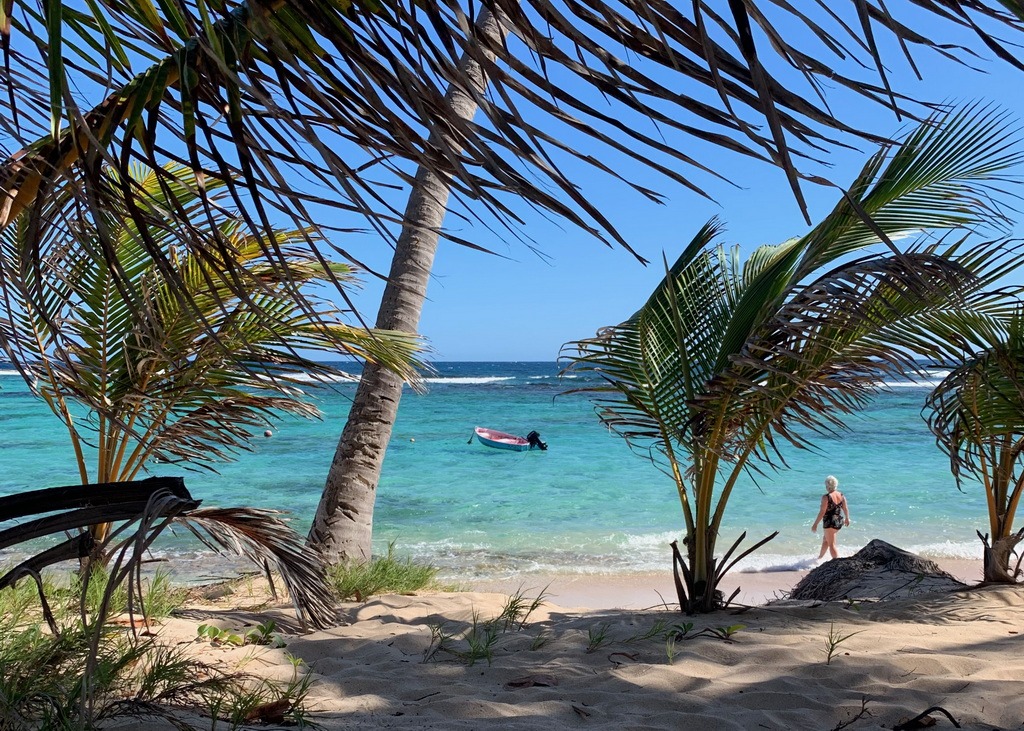
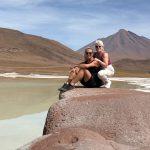
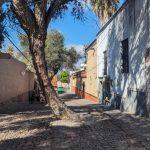
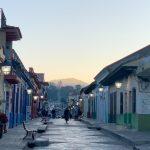
[…] travelled a lot in Mexico (see, for example, last year’s post on 3 Months in Mexico: Mazatlan, San Miguel de Allende, Oaxaca & Puerto Morelos, and the previous year’s Strawberries at Lunch: Mexico City Food & Drink Reviews. This […]
Thank you for the info. !!